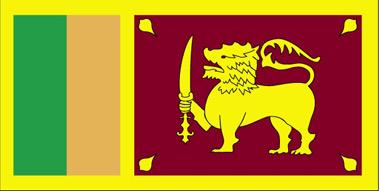Sri Lanka
2009-08-19 14:32 BJTSpecial Report: Asia Pacific |
Government
 |
The Democratic Socialist Republic of Sri Lanka is a free, independent and sovereign nation. A system of administration through provincial councils was introduced in 1988. Legislative power is exercised by Parliament, elected by universal franchise on a proportional representation basis. Executive power of the people, including defence, is exercised by the President, who is also elected by the people.
Location & Physical Features
Sri Lanka, an island in the Indian Ocean is located to the south of the Indian subcontinent. It lies between 5° 55' and 9° 55' north of the equator and between the eastern longitudes 79° 42' and 81° 52'. The total land area is 65,610 sq. km. and is astonishingly varied. A length of 445 km. and breadth of 225 km. encompasse beautiful tropical beaches, verdant vegetation, ancient monuments and a thousand delights to please all tastes. The relief features of the island consist of a mountainous mass somewhat south of the centre, with height exceeding 2,500 metres, surrounded by broad plains. Palm fringed beaches surround the island and the sea temperature rarely falls below 27°C.
Climate & Seasons
In the lowlands the climate is typically tropical with an average temperature of 27°C in Colombo. In the higher elevations it can be quite cool with temperatures going down to 16°C at an altitude of nearly 2,000 metres. Bright, sunny warm days are the rule and are common even during the height of the monsoon - climatically Sri Lanka has no off season. The south west monsoon brings rain mainly from May to July to the western, southern and central regions of the island, while the north-east monsoon rains occur in the northern and eastern regions in December and January.
Language & Religion
Sinhala,Tamil and English are official languages in Sri Lanka. Sinhala, a language of Indo-Aryan origin is the language of the majority. English is widely spoken and understood.
Place names and sign-boards on buses and trains are usually in all three languages. Sri Lanka is a land of religious freedom and tolerance. Wherever you travel you will come across a Buddhist Temple or Dagaba, a Hindu Kovil, a Christian Church or a Mosque, each with its own distinctive architecture. When visiting holy places please conform to the requirements as regards dress in order not to show disrespect. Related sites
Buddhism is the main religion of Sri Lanka where it was officially introduced in the third century B.C. during the reign of King Devanam Piyatissa by Venerable Mahinda who was son of Emperor Asoka of India. No sooner than it was introduced here the new teaching caught up with the inhabitants of the country so rapidly that within a few months’ time the entire country became Buddhist. In Sri Lanka it has found its most congenial permanent home.
Buddhism is the practical system of psychological and philosophical ethics taught to humanity by the Indian prince Siddhartha Gauthama in the 6th century B.C. He was born on the full – moon day of May in the year 623 B.C. as the son of Suddhodana, a provincial ruler of the kingdom of Kapilavastu in Central India. His teaching has today become a world religion providing inspiration and guidance to nearly one fourth of the world’s population.
He lived the house – hold life for twenty-nine years, the last thirteen years of which constituted his married life with princes Yasodhara. As a royal prince born with the silver spoon in the month he led a luxurious life. However, he had been a very contemplative person from his young days and this nature of his did not make him happy amidst his royal luxury. To him such enjoyment did not make any appeal because he saw that it was fleeting and temporary and as such, in the ultimate analysis, life is painful. All so-called pleasures are delusive. Amidst comfort and prosperity he realized the university of sorrow inherent in human existence.
Despite all the efforts of man to achieve happiness in this world, human suffering stares in the face of all living beings. Search after worldly pleasures available to him and donning the simple garb of an ascetic, alone and penniless, he wandered forth from home to homelessness in search of Truth and Peace, which to him appeared as an attainable objective.
Initially, he went to all the distinguished teachers at the time all of whom failed to meet his demands. He was determined to find it for himself. This was followed by six years of painful austerities which too proved futile. However, by directing the searchlight inward, followed by a severe mental and an emotional struggle, he ultimately achieved his cherished goal on the full moon day of May 588 B.C. under the Bodhi Tree at Buddhagaya in India.
Economy
Sri Lanka is mainly an agricultural country. The chief crop is rice with which the country is almost self sufficient. Tea, rubber and coconut are also important agricultural crops, with tea being a major foreign exchange earner. In addition, other crops of importance are cocoa and spices such as cinnamon, cardamom, nutmeg, pepper and cloves. Fruit and vegetables, native to both tropical and temperate regions, grow well in Sri Lanka. Sri Lanka is also a major exporter of precious and semi-precious stones. Within the last few years remittances from Sri Lankans employed abroad have contributed a large share towards foreign exchange.
The last three decades have seen tourism emerge as an important industry. There has also been a rapid growth in manufacturing industries which offer a wide range of export goods such as petroleum products, leather goods, ready made garments and electronic equipment.

 Mail
Mail Share
Share Print
Print


 Video
Video









 2009 China Central Television. All Rights Reserved
2009 China Central Television. All Rights Reserved